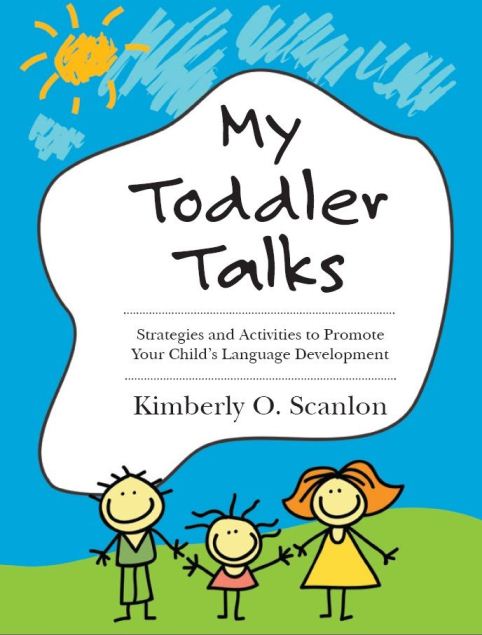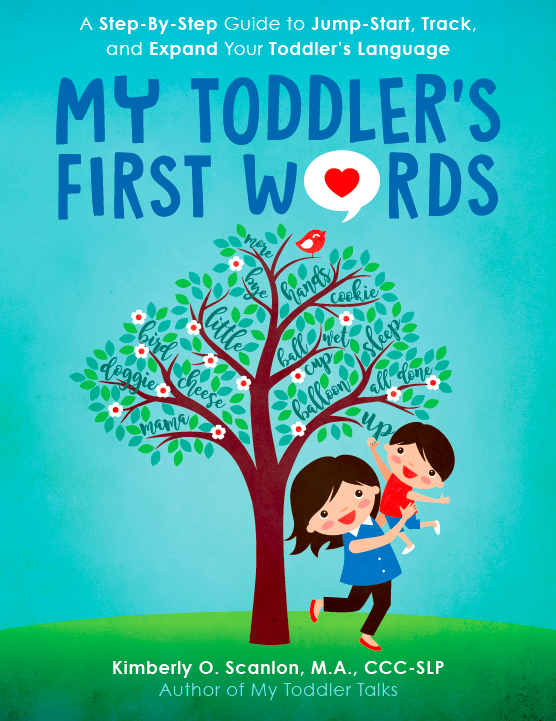Before First Words: How Does My Toddler Respond to and Interact with Me?
In Part One of My Toddler’s First Words, my newest book, I introduce readers to Language Development Basics. I specifically ask parents to carefully consider 7 different questions.
The first question is:
How does your toddler respond to and interact with you?
I will explain the meaning of this question by showing you two graphics because a picture is worth a thousand words! Visuals increase understanding.
In this first image, a garbage truck is coming down the street and a father, knowing his son loves garbage trucks, enthusiastically shouts, “Alex, look! A garbage truck!
Alex immediately stops playing in the dirt to stare at the garbage truck.
This is important because Alex responded to his father - he stopped playing in the dirt and shifted his focus from the dirt to the truck. Alex also followed his father’s point and looked in the direction of the garbage truck.
In this second image, a toddler is trying to gain her mother’s attention because she wants her mom to see the butterfly. She is initiating interaction with her mom.
This is important because not only did the little girl grab her mother’s shirt, she also intentionally looked at her mother and pointed to the butterfly.
Eye gaze is vital to social learning and communication. By just a few weeks old, infants are using their eyes to study objects and engage with caregivers. Propelled by early interactive engagement with loved ones, most young children quickly and instinctively learn to use their eyes as a tool to communicate their thoughts, feelings, and intentions. Doing so opens their world to more sophisticated and complex communication.
Gesture development is equally important to communication. According to the FIRST WORDS Project from Florida State University, the ability to point with a finger to reference things at a distance begins by approximately 14 months old. This ability is “a sign that observational learning is solid and they are on the cusp of becoming a symbolic communicator.”
Now, think of your toddler.
How does your toddler respond when you call his or her name?
How does your toddler respond when you ask or say something to him or her?
Does your toddler look at you when you are speaking or trying to engage with him? Does your toddler look at the thing you are talking about?
Does your toddler make any sounds?
Does your toddler make any gestures?
If these questions stir up concern, I strongly suggest addressing it.
Speak to your pediatrician about your worries. He or she may be able to advise you.
Consider having your child evaluated for possible speech therapy services. My post - My Toddler’s Isn’t Talking. What Should I Do? details many different options for helping your loved one.
Make changes in how you respond and interact to your child.
Get closer to your child. If you ask a question or call his or her name while sitting on the couch and he or she doesn’t respond. Move to the floor! Lie or sit down next to your child so you are closer and in his or her line of vision. Touch his or her shoulder, hand, or cheek and ask the question or say his or her name again.
Position desired objects or toys near your face (eyes or mouth). This way your child has to look at you in order to obtain the item. However, the main key when doing this, isn’t to stress or frustrate your child. You are doing this in a loving, playful manner. For instance, take the toy and put it on top of your head. Give his favorite stuffed animals kisses or hugs. Wear funny hats, clown glasses, or fake noses. Make looking at your face or in your direction simply irresistible.
If you have a copy of My Toddler Talks: Strategies and Activities to Promote Your Child’s Language Development - read about the technique - Gestures, Pantomime, or Silly Sounds - and follow my play routines that emphasize use of gestures. In My Toddler Talks, I also give suggestions on how to properly hold objects to facilitate eye gaze, sounds, and words.
Part three of My Toddler’s First Words offers 8 different strategies to increase early language development. The following three techniques will help to improve how your toddler responses and reacts to you:
identify and appreciate the child’s lead (pgs 47 to 49),
be responsive (pgs 49 to 51),
imitate, imitate, imitate (56-58)
These techniques can help facilitate the foundational skills need for more effective communication. “Receptive Language Development Tips,” in My Toddler’s First Words on page 22 are also applicable.
To read more blog posts related to this topic, please see:
Why Does My Toddler Pull and Point But Not Talk?
My Toddler Pinches and Bites When We Try to Get her to Talk
7 Ways to Promote Communication Without Frustration
How Can I Get My Toddler to Sit Down and Focus?
Before First Words: Using Fun Sounds to Encourage Toddler CommunIcation
As always, I hope this post has been helpful! And, if you have purchased any of my books - THANK YOU! Please let me know what you think. Kindly consider writing a review on Amazon.





